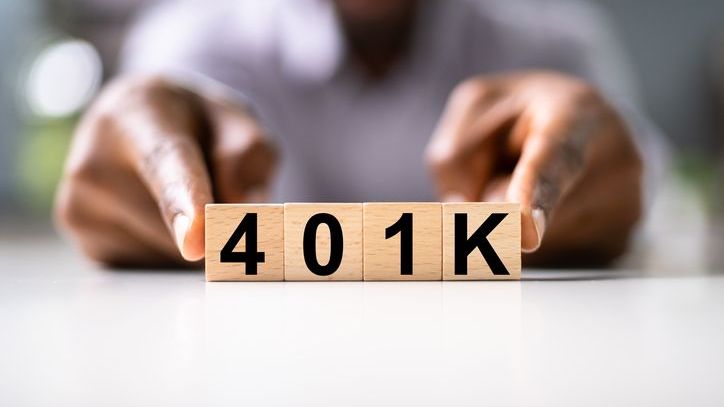
Catch-up contributions are designed to help people save extra money in tax-advantaged retirement accounts once they hit age 50. For many savers who are behind on their retirement savings goals, catch-up contributions represent a not-to-be-missed second chance at securing a more comfortable retirement.
A financial advisor can help you plan and save for retirement. Connect with a fiduciary advisor today.
But what if you’ve already amassed a sizable retirement nest egg? Say for example that you’re 55 years old with $1.2 million in a 401(k). Making catch-up contributions may not be a necessity, especially if you have other immediate financial needs like covering your living expenses or paying down high-interest debt.
Catch-up Contribution

Catch-up contributions allow savers who are 50 and older make extra contributions to tax-advantaged retirement plans each year. These amounts adjust periodically. For 2024, an eligible saver can contribute an extra $7,500 to a 401(k), 403(b), 457 or government Thrift Savings Plan, bringing their total annual contribution to $30,500. The IRS also permits people 50 and older to save an extra $1,000 in an IRA.
And if you’re on the hunt for place to keep your retirement emergency fund, consider these high-yield savings accounts.
Catch-up contributions offer some appealing advantages. The pluses include the ability to get an added tax deduction for the current year and put larger sums of money away in accounts where the balances can be invested and grow tax-free. However, it’s important to not that if you make over $145,000 in 2024, catch-up contributions must be made with after-tax dollars. But if you need help figuring out how much you should be socking away each year for retirement, consider talking it over with a financial advisor.
Additional Considerations

Despite these benefits, only around 16% of eligible savers took advantage of catch-up contributions in 2022, according to Vanguard’s annual “How America Saves” report in 2023. Catch-up contributions may not make financial sense for everyone, including those having trouble making ends meet and those with high-interest debt.
For instance, say you have $20,000 in credit card debt carrying an interest rate of 24%. SmartAsset’s Credit Card Calculator shows that if you make a minimum monthly payment of $401, you won’t pay it off for more than 25 years and you’ll end up paying $101,377 in total interest.
Now, say you take the $7,500 you would have used to make catch-up contributions and use it to pay down your credit card balance instead. By spreading this money out over 12 months and adding it to your minimum monthly payments, you could potentially pay off your balance in just two years and pay only $5,600 in total interest.
Others may choose to forgo catch-up contributions if they’re already on track for a secure retirement. For example, imagine that you’re a 55-year-old worker with $1.2 million saved in a 401(k) with no employer matching. Using SmartAsset’s Retirement Calculator, you can get a rough sense of how making – or not making – catch-up contributions could potentially affect your retirement income plan.
By maxing out your 401(k) but skipping the catch-up contribution (assuming the contribution limits don’t increase), you could still retire with over $2.1 million at age 65. While that’s approximately $100,000 less than you would have after making 10 years worth of catch-up contributions, it would only result in about $5,000 less in annual retirement income. Depending on your projected expenses and desired lifestyle, that may not be that big of a deal for you.
These are rough calculations to illustrate the potential difference in the savings approaches. A financial advisor can put together a more detailed and nuanced analysis as part of a financial plan.
However, much depends on your circumstances. If you don’t have any immediate financial needs that supersede saving for retirement and you can afford to make catch-up contributions, doing so can be a prudent move. For example, having the extra savings could help if you’re faced with extensive medical expenses or long-term care needs in retirement.
Bottom Line
Catch-up contributions can be a great help for someone who hasn’t saved much for retirement by age 50. They may not be as useful for someone who’s living on a tight budget or trying to pay off high-interest debt. A 55-year-old with $1.2 million saved in a 401(k) probably may forgo their catch-up contributions if they feel comfortable with the potential income their savings will generate in retirement. Then again, having more saved would help them better deal with the unexpected expenses that can often arise.
Retirement Planning Tips
- If you save for retirement using a 401(l), you’ll have to take required minimum distributions (RMDs) once you reach age 73 (or age 75 if you turn 74 after Dec. 31, 2032). SmartAsset’s RMD calculator can tell you how much your RMDs will be.
- Whether you’re trying to figure out how much you’ll need to have saved before you can retire or you’re focused on minimizing taxes in retirement, a financial advisor may be able to help. Finding a financial advisor doesn’t have to be hard. SmartAsset’s free tool matches you with up to three vetted financial advisors who serve your area, and you can have a free introductory call with your advisor matches to decide which one you feel is right for you. If you’re ready to find an advisor who can help you achieve your financial goals, get started now.
Photo credit: ©iStock.com/insta_photos, ©iStock.com/DMP, ©iStock.com/AndreyPopov